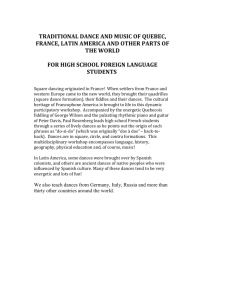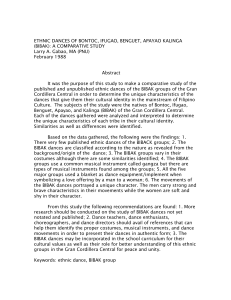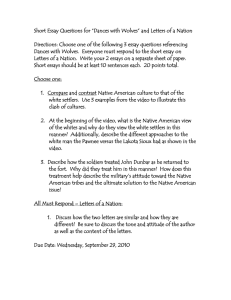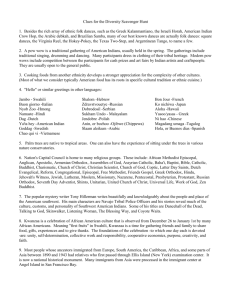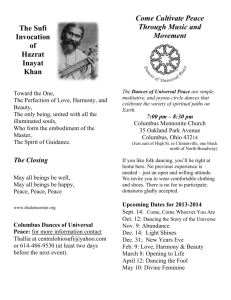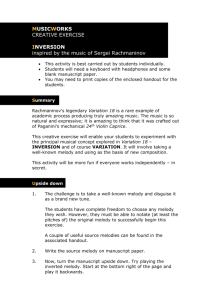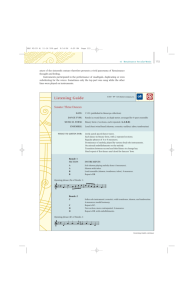Three Susato Dances
advertisement
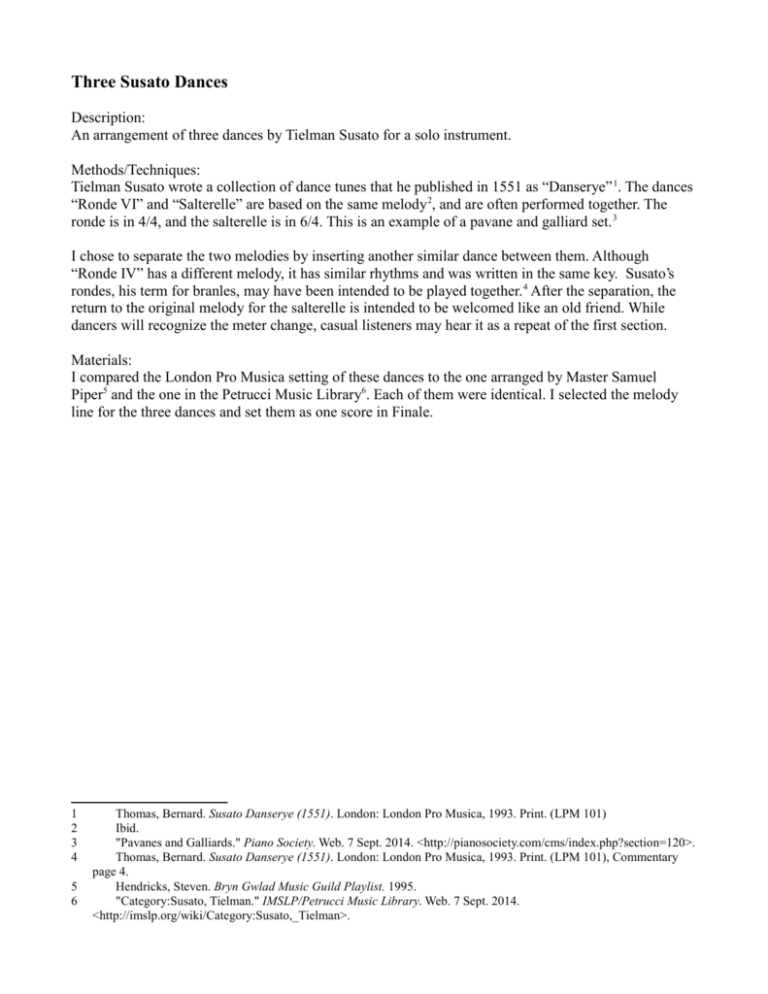
Three Susato Dances Description: An arrangement of three dances by Tielman Susato for a solo instrument. Methods/Techniques: Tielman Susato wrote a collection of dance tunes that he published in 1551 as “Danserye” 1. The dances “Ronde VI” and “Salterelle” are based on the same melody 2, and are often performed together. The ronde is in 4/4, and the salterelle is in 6/4. This is an example of a pavane and galliard set. 3 I chose to separate the two melodies by inserting another similar dance between them. Although “Ronde IV” has a different melody, it has similar rhythms and was written in the same key. Susato's rondes, his term for branles, may have been intended to be played together. 4 After the separation, the return to the original melody for the salterelle is intended to be welcomed like an old friend. While dancers will recognize the meter change, casual listeners may hear it as a repeat of the first section. Materials: I compared the London Pro Musica setting of these dances to the one arranged by Master Samuel Piper5 and the one in the Petrucci Music Library6. Each of them were identical. I selected the melody line for the three dances and set them as one score in Finale. 1 2 3 4 5 6 Thomas, Bernard. Susato Danserye (1551). London: London Pro Musica, 1993. Print. (LPM 101) Ibid. "Pavanes and Galliards." Piano Society. Web. 7 Sept. 2014. <http://pianosociety.com/cms/index.php?section=120>. Thomas, Bernard. Susato Danserye (1551). London: London Pro Musica, 1993. Print. (LPM 101), Commentary page 4. Hendricks, Steven. Bryn Gwlad Music Guild Playlist. 1995. "Category:Susato, Tielman." IMSLP/Petrucci Music Library. Web. 7 Sept. 2014. <http://imslp.org/wiki/Category:Susato,_Tielman>.
